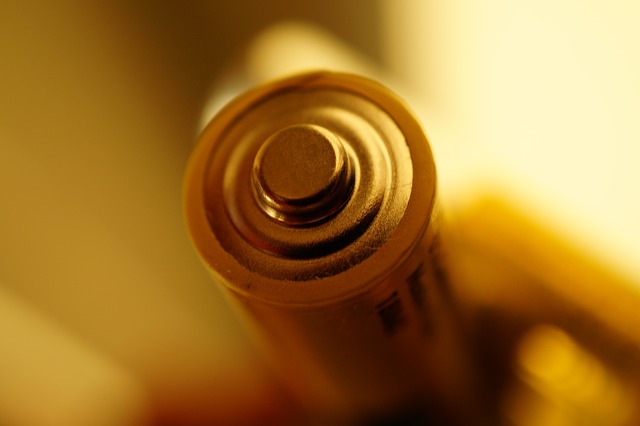Lithium-Ion Battery Charging-Equations, Theory And Best Practices
Jun 16, 2020 Pageview:3192
Lithium-ion batteries provide excellent performance. To get the best of them, you need to charge them properly. If the lithium-ion battery is not charging correctly, the battery operation will be damaged and destroyed - so be careful.
Proper charging of Li-ion batteries allows for better performance and longer working life. As a result, Li-ion battery charging is usually obtained in conjunction with the battery management system. It controls the charge level, discharge, and the rate at which these occur.
What Are The Lithium-Ion Battery Charging And Discharging Equations?
The dynamic performance of the battery in-charge and discharge is the speed at which the current can be stored and extracted. When charging and discharging, the terminal voltage rises and falls. The charge and discharge dynamics of batteries can be defined as the current inputs emitted at a constant charge. The battery is charged at low, medium and high rates. The high-rate discharge case indicates that the voltage is decreasing rapidly, so only a fraction of the capacity at high discharge rate can be used.
In the positive electrode, during charge, the active material is oxidized:
During charge in the negative electrode, the active material is reduced, and lithium ions move from the positive electrode and through the separator with the help of electrolyte to the negative electrode:
Li?
As Lithium-ion batteries are subjected to multiple cycles, they lose capacity due to the physical and chemical degradation of the positive and negative electrodes and the electrolyte.
When the battery is charged, an oxidation reaction occurs in the cathode—it means that some of the negatively charged electrons are lost. An equal number of positively charged intercalated lithium ions are dissolved in the electrolyte solution to maintain the charge in the cathode. These travel to the anode, where they are connected in graphite. Electrons are deposited into the graphite anode to connect the lithium-ion.
Discharge Chemistry:
During the discharge, lithium ions interconnect from the anode and return to the cathode via the electrolyte. It releases electrons that are attached to the anode, which flows through the external wire, which gives us the electric current we used to operate. The external wire connection allows the reaction to proceed, while the electrons are free to travel, while the positively charged lithium ions also balance the motion of their negative charge.
Do You Hear Of Lithium-Ion Battery Charging Theory?
The lithium-ion battery begins its life in full discharge: all of its lithium ions are connected in the cathode, and its chemistry is still unable to generate electricity. Before you use the battery, you need to charge it.
Before examining the role of a battery charger in increasing battery life, let's review the characteristics of the Li-ion battery. Lithium is one of the lightest metals, highly reactive, and has the highest electrochemical potential, making it a suitable material for a battery. Li-ion battery does not contain lithium in the metallic state. Instead, it uses lithium ions moving back and forth between the battery's cathode and anode, respectively, when charging and discharging.
Lithium-ion cell electrolyte is a solution of lithium salts in a mixture of additive solvents (such as dimethyl carbonate or diethyl carbonate) to improve battery performance. When lithium salts dissolve in the electrolyte, the solution contains ions. Individual lithium ions do not need to travel entirely from anode to cathode to complete the circuit. When ions are ejected from the anode, others are there in the electrolyte near the electrode surface can be easily absorbed into the cathode. The opposite happens when recharging.
As in the case of lead-acid, Li-ion does not need to be fully charged, and doing so is undesirable. Of course, it is better not to charge it, because high voltages can cause the battery to drain. Choose a lower voltage range or eliminate saturation charge, increasing battery life, but it also reduces runtime. As the consumer market promotes maximum runtime, these chargers go to maximum efficiency over extended service life.
1. When charging, lithium ions flow from the positive electrode (red) to the negative electrode (blue) and through the electrolyte (gray). The electrons flow from the positive electrode to the negative electrode, but go a long way around the external circuit. Electrons and ions are coupled with the negative electrode and deposit lithium.
2. When more ions do not flow, the battery is fully charged and ready to use.
3. After discharge, the ions return from the negative electrode to the positive electrode through the electrolyte. Electrons flow from the negative side of the electrode to the positive electrode via the outer circuit, which strengthens your laptop. When ions and electrons are mixed in a positive electrode, lithium is deposited there.
4. When all the ions move backward, the battery is fully discharged and must be recharged.
Do You Have Lithium-Ion Battery Charging Practices?
As we know that batteries come in all shapes, sizes, and chemistry, so do lithium-ion batteries. Their diverse chemistry and structure offer different features, often trading between efficiency, cost, and safety.
You might have lithium-ion battery charging practices due to its high density and low weight. Most lithium-ion cells are stacked in one place, making the battery pack lighter and more compact than other battery-type stacks. If enough lithium-ion cells are stacked together, they will reach the high voltage needed to drive an electric car. All of our vehicles already have batteries, but they only get a petrol or diesel engine, and then the fuel does all the work.
Lithium-ion batteries are essential to our daily life. They are with us for some time to come, as they are the best thing to use for electric vehicles and to store energy from wind and solar power when the wind is not blowing or the sun is shining.
Leave Message
Hottest Categories
-
Hottest Industry News
-
Latest Industry News











